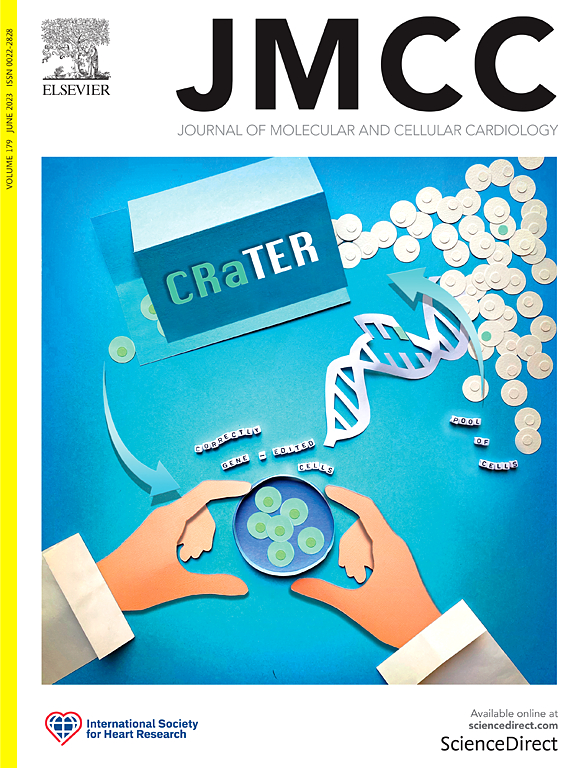连接蛋白43在诱导多能干细胞源性心肌细胞模拟心律失常疾病中的作用
IF 4.7
2区 医学
Q1 CARDIAC & CARDIOVASCULAR SYSTEMS
引用次数: 0
摘要
心律失常疾病的一个共同病理生理特征是通过心脏的电信号传输中断,导致危及生命的节律障碍。这些疾病与嵌入椎间盘的连接蛋白43 (Cx43)表达减少及其向外侧膜的易位有关,然而,其潜在机制尚不清楚。诱导多能干细胞衍生的心肌细胞(iPSC-CM)为研究这些病理生理过程提供了一个模型。在这里,我们验证了慢性应激(通常在心律失常发展之前)调节Cx43表达的假设。对iPSC-CM进行正常速率和速搏电刺激,分析其电学和Ca2+信号传导特性。我们的数据显示,通过微rna mir -1依赖机制,速配显著降低了Cx43的表达。抗mir -1处理恢复了应激条件下Cx43的表达,增强了Na+电流,改善了Ca2+传播和同步电活动。这些发现表明miR-1可能是减轻心律失常重塑和恢复心肌细胞强大电信号传递的潜在药理学靶点。本文章由计算机程序翻译,如有差异,请以英文原文为准。

The role of connexin-43 in modeling arrhythmogenic diseases with induced pluripotent stem cell-derived cardiomyocytes
A common pathophysiological characteristic of arrhythmic diseases is the disruption of electrical signal transmission across the heart causing life-threatening rhythm disorders. These conditions are associated with decreased expression of connexin-43 (Cx43) at intercalated discs and its translocation to the lateral membranes, however, the underlying mechanisms remain unclear. Induced pluripotent stem cell-derived cardiomyocytes (iPSC-CM) offer a model for studying these pathophysiological processes. Here, we tested the hypothesis that chronic stress, usually preceding arrhythmic developments, modulates Cx43 expression. iPSC-CM were electrically stimulated at a normal rate and by tachypacing, and their electrical and Ca2+ signaling properties were analyzed. Our data revealed that tachypacing significantly reduced Cx43 expression by a micro-RNA miR-1-dependent mechanism. Anti-miR-1 treatment restored Cx43 expression in conditions of stress, enhanced Na+ currents, improved Ca2+ propagation and synchronized electrical activity. These findings suggest miR-1 as a potential pharmacological target for mitigating arrhythmogenic remodeling and restoring robust electrical signal transmission in cardiomyocytes.
求助全文
通过发布文献求助,成功后即可免费获取论文全文。
去求助
来源期刊
CiteScore
10.70
自引率
0.00%
发文量
171
审稿时长
42 days
期刊介绍:
The Journal of Molecular and Cellular Cardiology publishes work advancing knowledge of the mechanisms responsible for both normal and diseased cardiovascular function. To this end papers are published in all relevant areas. These include (but are not limited to): structural biology; genetics; proteomics; morphology; stem cells; molecular biology; metabolism; biophysics; bioengineering; computational modeling and systems analysis; electrophysiology; pharmacology and physiology. Papers are encouraged with both basic and translational approaches. The journal is directed not only to basic scientists but also to clinical cardiologists who wish to follow the rapidly advancing frontiers of basic knowledge of the heart and circulation.

 求助内容:
求助内容: 应助结果提醒方式:
应助结果提醒方式:


